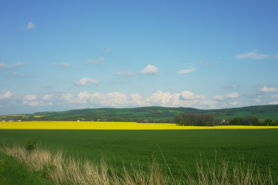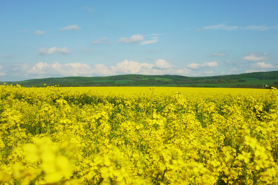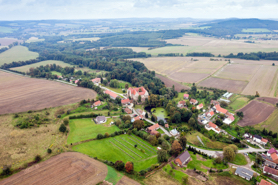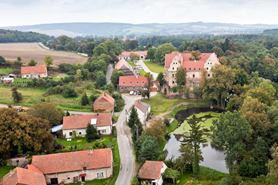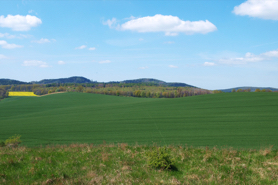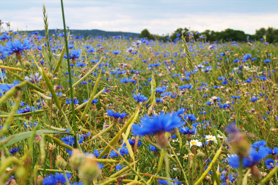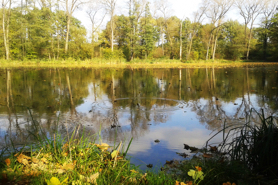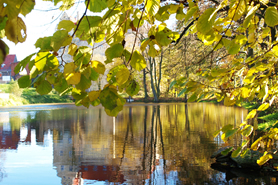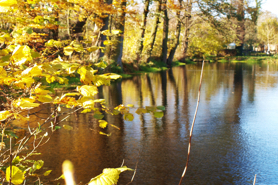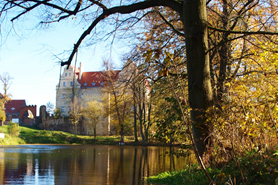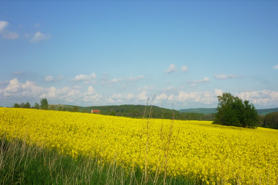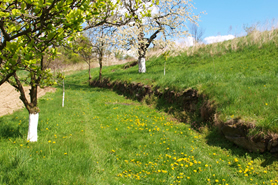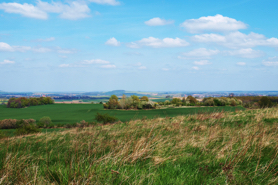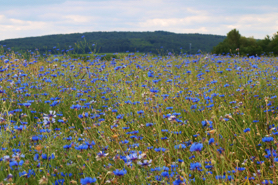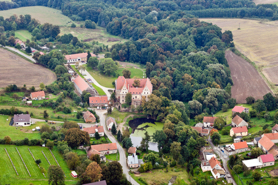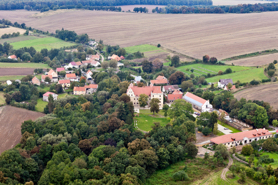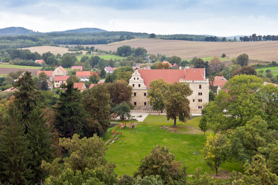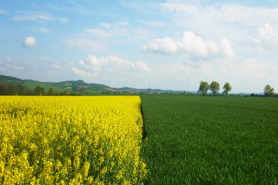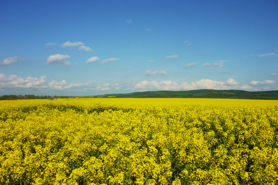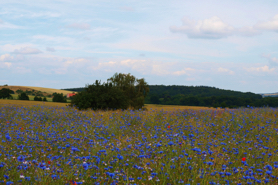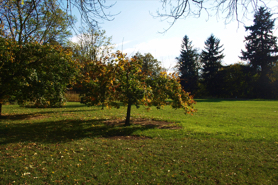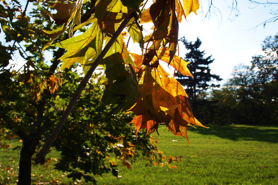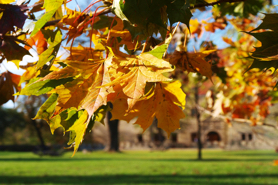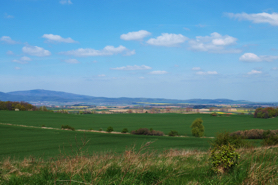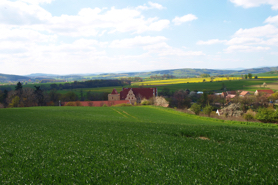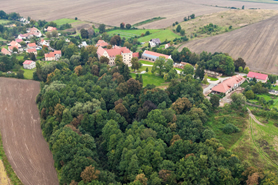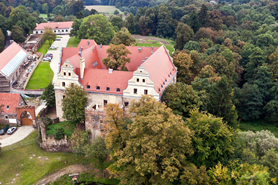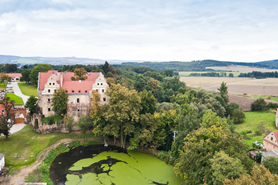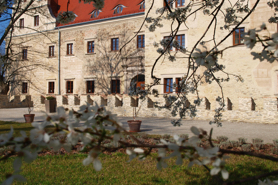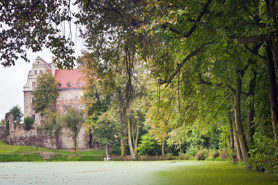Lower Silesian monuments
GOLA DZIERŻONIOWSKA
ONLY 40 MINUTES SOUTH OF WROCŁAW
The first mention of the village as "Gola" dates back to 1210: here free peasants pay the rent to the monastery in Kamieniec. However, the mid-fourteenth century, the village is already in the hands of knights. A 1350 document shows "Cunadi de Poranicz domini ville Gola:" Konrad of Poranicz, lord of the village of Gola. In 1536, the forests of the Gola property are given to the St. George Church in Niemcza. The next owner of the village is Leonard von Rohnau who, in 1580, builds a manor on the site of the previously existing building.
The manor is extended in 1600-1610. In 1611, Dietrich von Ronau, a Świdnica-Jawor starost becomes a famous owner of the local property; however, it is Georg von Ronau that is already mentioned as the owner in 1626. There are functioning fish ponds situated next to the manor. In 1668, the local properties are taken over by the Hentschels and, in the early eighteenth century, by the Seidlitzs. A regular court garden on the east side of the manor is established in the eighteenth century.
The Prittwitz und Gaffron family take over the property in the nineteenth century. Ponds lose their utilitarian significance in the nineteenth century and become part of the landscape. An 1845 mention lists a castle, a manor farm with a mill, brewery and distillery in the village. This is when the settlement "Johannisthal" and the local forestry administration region are also part of Gola.
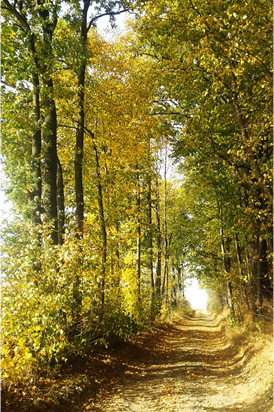
CASTLE IN GOLA
VALUABLE RENAISSANCE MONUMENT
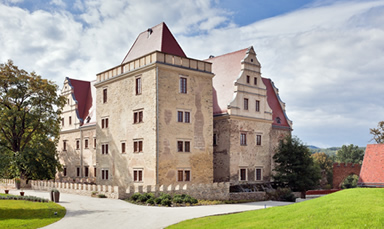
The castle in Gola Dzierżoniowska, charmingly located between the Krzyżowe Hills and Gumińskie Hills, is a valuable Renaissance monument. It is one of the rare buildings erected in the sixteenth century that still retains its Renaissance character. Minor alterations included only extension works involving stylised neo-Gothic defence walls and battlements in the nineteenth century. Thanks to its authenticity, it is an extremely valuable testimony of Renaissance architecture.
The castle survived the war without any major damage. Its last owners, the von Prittwitz und Gaffron family, were forced to leave their estate. Since then the castle gradually fell into disrepair. Abandoned, it waited for better times that came at the beginning of the twenty-first century. Beginning in 2000, the castle was subject to intense works lasting 13 years that aimed at restoring its former glory while keeping the original qualities of the building. The shape of the roof was restored along with magnificent Renaissance gables. Windows and portals were also renovated.
Vaults in the basement and the ground floor level as well as in the north wing were also restored, together with the old defence wall. The barrel vault of the former kitchen, the vault of the ground floor and gate passages were also reconstructed. There are also two well-preserved fireplaces made of stone that once were used as the source of heating and room decorations. The upward extension in the shape of ornamental volutes stands out in this unique architectural design. Today, the undoubted attractions are the castle's courtyard and the western terrace overlooking the area. The real masterpiece of construction was the reconstruction of the missing parts of the main portal above the entrance gate. This portal is the most valuable work of the Renaissance architectural sculpture in Silesia. Pilaster-shaped door jambs are supported on plinths with decorated capitals. Additionally, the portal is crowned with a beautiful triangular tympanum. One of its demonstrated themes is a carefully designed floral ornament on the archivolt. The lower part consists of three triglyphs. They contain an inscription with psalms written in tiny capital letters in German. The upward extension of the entablature, closed by a prominent cornice, consists of sixteen coats of arms arranged in two rows. Next to them are the names of family members and their ancestors. Also visible are religious symbols, including Faith and Hope, psalms and a motto on the fragility of life Hodie mihi cras tibi.
All works were performed with great care, preserving the historical shape of the building, its spatial distribution and essential structural elements designed in the sixteenth century. The materials used have preserved the qualities of the structure, due to which the panorama and external appearance correspond to the historical sources. The renovations performed and collaboration with local residents contributed to Uroczysko Siedmiu Stawów obtaining a second life. Buildings in the restored historical spatial distribution have gained new functions. Many years of work have enabled their adaptation to needs of a luxury hotel. Because of this the castle in Gola Dzierżoniowska has become a unique combination of history and modernity.
HISTORY
THE UNIQUE ATMOSPHERE OF THE SIXTEENTH-CENTURY CASTLE
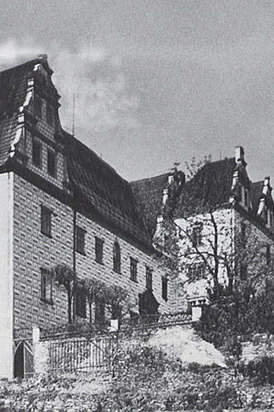
Turning back time, we see history dating back to the sixteenth century. The castle in Gola Dzierżoniowska was built by Leonard von Rohnau in 1580. The two-storey castle with upward extensions in the tower hides a courtyard with a 300 year old beautiful linden tree at its central point. It delights with its decorated façades, sculptures and the unique, historic portal of the gateway. This portal is considered to be one of the finest examples of mature, Italian school of the Renaissance in Silesia.
Noteworthy are also the gables of the castle of an architectural decoration type that consists of prominent cornices and rosewood. The castle in Gola Dzierżoniowska is a part of a larger spatial composition that comprises a former manor farm, surrounding defence walls with gates; and a landscape park with seven ponds located in the valley of Uroczysko Siedmiu Stawów. The uniqueness of this place is not only determined by its historical architecture and proximity to nature but also the exceptional composition of the park with ponds and a network of paths. It is surrounded by well-preserved historical old forest that requires attentive care, which for centuries has given shade and comfort to all yearning for relaxation in nature.
In every corner the magic of the nature is intertwined with the secret of history...
NATURE
YOU CAN ENJOY THE CLOSENESS OF THE NATURE
At the foot of the castle hill there is a park with picturesque, lush green vegetation. Over 1,600 trees made up of almost forty species from around the world grow on thirteen hectares. A stream cuts through the park, providing water to the ponds (currently undergoing treatment) bathed in the green of old trees. There is a rare wealth of diverse vegetation here whose particular element is the beech tree avenue leading from the castle through the park to Uroczysko Siedmiu Stawów. There are beautiful linden, maple and ash trees in the immediate vicinity of the castle. Expansive chestnut and willow trees grow in the valley of the stream. The park contains preserved fragments of circular stone benches that once surrounded the oak trees there. The old forest gives a special atmosphere to this place. Uroczysko Siedmiu Stawów enchants by its architecture, atmosphere and nature. The unique location of the castle on the top of a hill allows admiring its vicinity.
The numerous hills surrounding the Dzierżoniowska Basin hide numerous attractions: hiking paths, old quarries and observation towers. In this scenery, the historic atmosphere of the place is particularly captivating. The varied terrain is captivating, ranging from lowland, upland and mountain areas. It is worth noting that very rare mouflons live here. Rhododendrons and azaleas bloom in the Wojsławice arboretum in May and June.
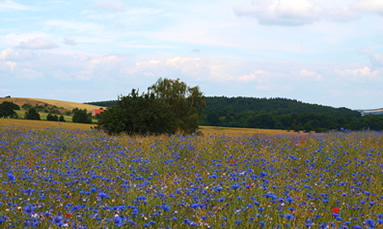
The view of one of the oldest cities in Poland, Niemcza, beautifully situated on a hill, is particularly enchanting. The Owl Mountains Landscape Park was established here in 1990s. It is an ideal place for lovers of active leisure time. The area offers numerous cycle paths, Nordic walking paths, horseback riding, fishing ponds and ski lifts. The numerous monuments, picturesque hills and beautifully preserved forests make this region worth seeing. You can rest here and enjoy the closeness of the nature.
UROCZYSKO SIEDMIU STAWÓW LUXURY HOTEL
EXCLUSIVE AND ECOLOGICAL PLACE OF LEISURE
Uroczysko Siedmiu Stawów Luxury Hotel is an exclusive and ecological place of leisure for exceptional guests. The unique atmosphere of the sixteenth-century Renaissance castle with historical interiors decorated in a modern style is admiring.
The historical interiors of Uroczysko Siedmiu Stawów house the first model SPA by L'Occitane in Poland - created in collaboration with the renowned French cosmetic brand L'Occitane.
Uroczysko Siedmiu Stawów offers leisure for everyone, with refined and healthy cuisine, while the nature and unique atmosphere ensures true relaxation. The stylish interiors and exclusive SPA rooms guarantee luxurious rest.
Another asset of Uroczysko Siedmiu Stawów is its location. The hotel is situated in the village of Gola Dzierżoniowska, only 40 minutes south of Wrocław, in the vicinity of the towns of Niemcza and Dzierżoniów. read more...
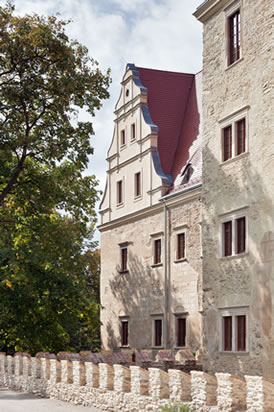
EKO
ECO-FRIENDLY PLACE OF REST AND REGENERATION
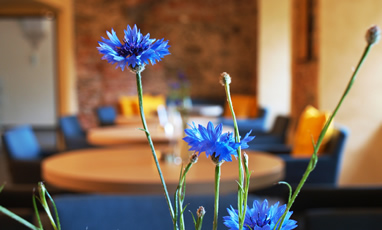
Uroczysko Siedmiu Stawów Luxury Hotel has been conceived as an exclusive yet eco-friendly place of rest and regeneration for demanding guests. Its location at the foot of the Niemczańsko-Strzelińskie Hills, the Gumińske Hills and the Krzyżowe Hills, and the proximity of historical buildings in the towns of Niemcza and Dzierżoniów contribute to its exceptional character. The immediate vicinity of Uroczysko and the landscape park surrounding the Renaissance architecture of the castle are the most valuable qualities of the place.
Together with its entire environs, the hotel is located on a nature protection site as part of the EU Natura 2000 programme. The purpose of the programme is to preserve certain types of natural habitats and species, regarded as valuable and endangered across Europe. Elm-ash and alder-ash forests in watercourse valleys and around ponds, featuring trees of monumental size, are considered particularly valuable in the flora surrounding Uroczysko. The area is distinguished by butterfly fauna featuring Danube Clouded Yellow. The site is important for the protection of two species of bats; it is also a place of large presence of edible dormouse. The major ornithological qualities of this area include the richness of many forest and some aquatic birds, considered rare and endangered.
By starting the renovation and adaptation of the castle to its new function, the priority was to ensure the maximum reduction of the impact of the project on the environment. In order to achieve this objective, three investments with a positive impact on the environment have been implemented: a heat pump; a biological wastewater treatment plant; and a greywater system. Therefore, today guests can enjoy the beauty of the place, relaxing and deriving health from the intact nature surrounding Uroczysko. read more...
GALLERY
CONTACT
Uroczysko Siedmiu Stawów Luxury Hotel
tel.+48 88 55 44 100,
+48 71 75 09 100,
e-mail: uroczysko@uroczysko7stawow.com
GPS: E21° 59' 56.76"
N50° 2' 27.78"
www.uroczysko7stawow.pl
